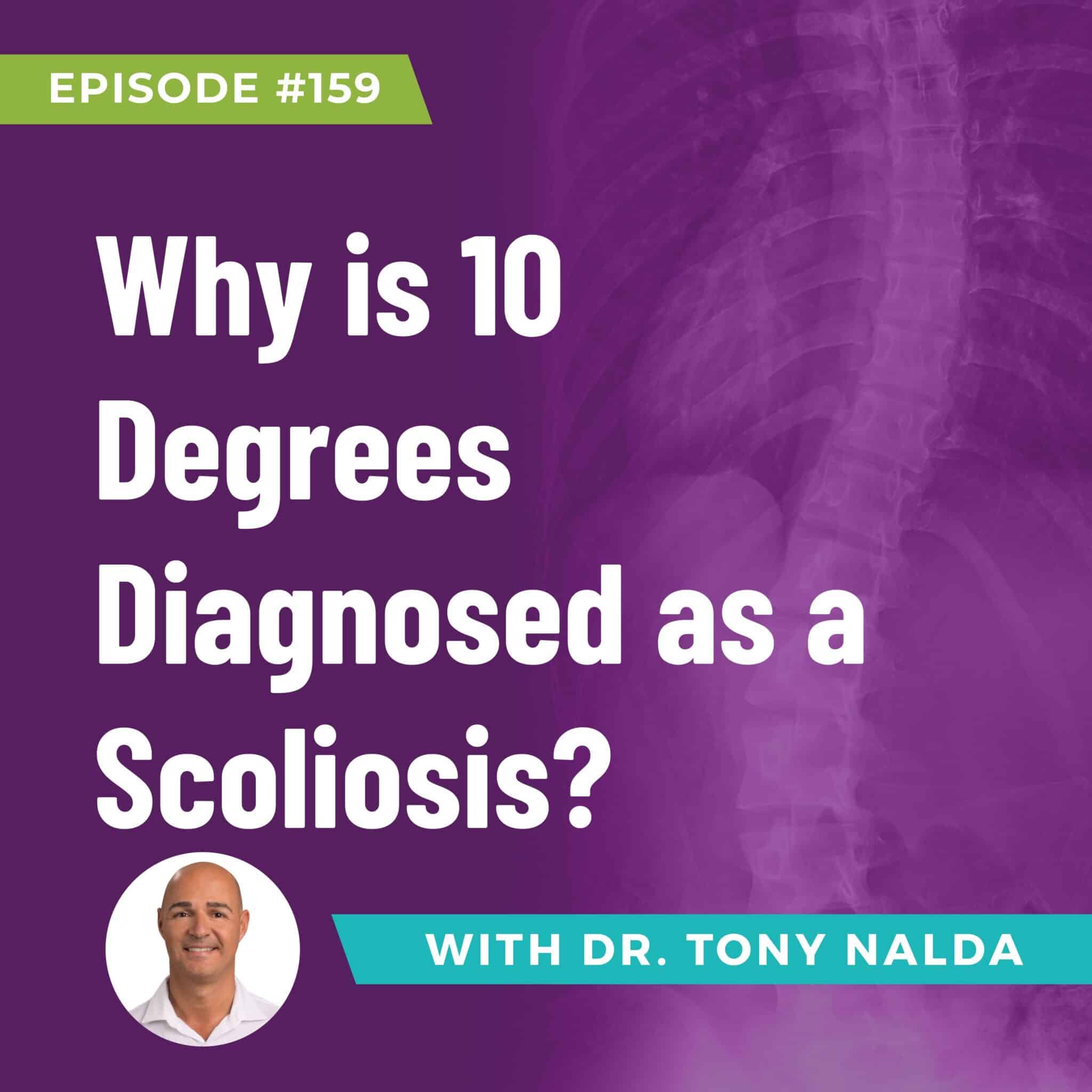Episode 159: Why is 10 Degrees Diagnosed as a Scoliosis?
Table of Contents
Podcast Show Notes: Scoliosis Treatment with Dr. Tony Nalda
Episode Title: Why 10 Degrees Is the Diagnostic Threshold for Scoliosis
🎙️ Episode Overview:
Why is scoliosis officially diagnosed at 10 degrees? In this episode, Dr. Tony Nalda explores the origin of the 10-degree cutoff, what it means for patients, and why the numbers don’t always reflect the impact scoliosis can have on daily life.
📌 Key Topics Covered:
✅ What Is Scoliosis?
-
A lateral curvature of the spine of 10 degrees or more, with spinal rotation
-
Must be measured via Cobb angle on a standing spinal X-ray
-
Three-dimensional deformity—not just a sideways curve
✅ Cobb Angle & Severity Categories:
-
Mild: 10–25 degrees
-
Moderate: 25–40 degrees
-
Severe: 40+ degrees
-
Very Severe (Dr. Nalda’s category): 80+ degrees
These classifications were originally designed by orthopedic surgeons for surgical decision-making, not necessarily for predicting symptoms or patient outcomes.
✅ Why 10 Degrees?
-
In 1977, Dr. William Kane proposed 10° as the cutoff to create diagnostic consistency
-
Prior to this, some doctors diagnosed scoliosis at 5°, 15°, or even 20°
-
The 10-degree benchmark became the accepted clinical standard—but not because it signified a dramatic physiological shift
✅ Why "Mild" Scoliosis Can Still Be Serious:
-
Even small curves (10–20 degrees) can cause pain, dysfunction, and postural changes
-
Many patients with 15–20 degree curves experience symptoms despite being labeled “mild”
-
Early misalignments are like car tires out of alignment—they wear things down over time
✅ The Problem With Chasing Numbers:
-
Curves less than 10° are still spinal misalignments
-
Scoliosis isn’t always visible until 20–25°, meaning millions go undiagnosed
-
Many people don’t realize they have scoliosis until adulthood, especially if pain is minimal in youth
✅ What Matters Most:
-
Not just the degree of curvature, but the impact on your health and function
-
Early detection and proactive, conservative treatment can prevent small curves from becoming severe
-
Look beyond the labels—what matters is how your spine is affecting your quality of life
💡 Clinical Insight:
Every severe scoliosis case started out as a smaller curve. The earlier you intervene—regardless of whether it's “mild” or not—the better your chances are to prevent long-term progression.
📘 Free Resource:
Download the Free Guide: How to Effectively Treat Scoliosis
👉 scoliosisreductioncenter.com/free
🔗 Stay Connected:
🌐 Website: scoliosisreductioncenter.com
🎧 Subscribe to the podcast
🔔 Hit the bell icon to get notified of new content
It’s not just about the number—it’s about the impact. Treat the cause, not just the curve.
Artlist.io 847544
Podcast: Play in new window | Download
Subscribe: RSS
Dr. Tony Nalda
DOCTOR OF CHIROPRACTIC
After receiving an undergraduate degree in psychology and his Doctorate of Chiropractic from Life University, Dr. Nalda settled in Celebration, Florida and proceeded to build one of Central Florida’s most successful chiropractic clinics.
His experience with patients suffering from scoliosis, and the confusion and frustration they faced, led him to seek a specialty in scoliosis care. In 2006 he completed his Intensive Care Certification from CLEAR Institute, a leading scoliosis educational and certification center.
About Dr. Tony Nalda
 Ready to explore scoliosis treatment? Contact Us Now
Ready to explore scoliosis treatment? Contact Us Now








